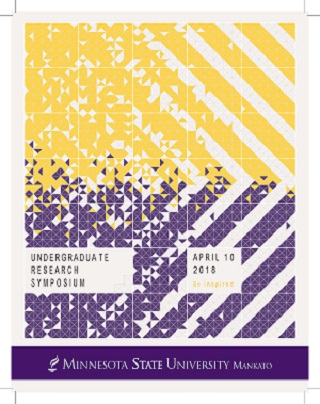Sex Trafficking and Misleading Research: A Critical Analysis
Location
CSU Ballroom
Start Date
10-4-2018 2:00 PM
End Date
10-4-2018 3:30 PM
Student's Major
Psychology
Student's College
Social and Behavioral Sciences
Mentor's Name
Eric Sprankle
Mentor's Department
Psychology
Mentor's College
Social and Behavioral Sciences
Second Mentor's Name
Alexander Twohy
Second Mentor's Department
Psychology
Second Mentor's College
Social and Behavioral Sciences
Description
This critique analyzes the findings of a 2016 study published by the University of Texas, Human Trafficking by the Numbers: The Initial Benchmark of Prevalence and Economic Impact for Texas, by Busch-Armendariz. Through examination of the poorly constructed methods used in identifying victims of youth of sex trafficking, this critique challenges the study's misleading findings. The report cited seven studies on at-risk youth (homeless, in foster care, etc.), which found an average of 25% who have sold sexual services. By multiplying the number of at-risk youth in Texas by 25%, 79,000 victims of minor and youth sex trafficking were identified. However, many “youth” in the studies were over the age of 18. This is problematic for several key reasons, as it includes the experiences of many legal adults working in the sex industry through their own free will and portrays all of them as being inherently victimized, coerced, or trafficked into the industry. Furthermore, none of the study's secondary sources specified whether the participants had a pimp or adult trafficker, which makes the assumption all youth in the sex industry are working for adults, whereas many are working independently. This critique suggests using a concrete method for determining victimization, such as strict definitions of youth and trafficking. In the future, better, more exclusive research methods will generate more accurate results, working to eliminate misconceptions and eradicate the social stigma that blurs the boundary between independent, consensual sex work and clearly defined instances of sex trafficking.
Sex Trafficking and Misleading Research: A Critical Analysis
CSU Ballroom
This critique analyzes the findings of a 2016 study published by the University of Texas, Human Trafficking by the Numbers: The Initial Benchmark of Prevalence and Economic Impact for Texas, by Busch-Armendariz. Through examination of the poorly constructed methods used in identifying victims of youth of sex trafficking, this critique challenges the study's misleading findings. The report cited seven studies on at-risk youth (homeless, in foster care, etc.), which found an average of 25% who have sold sexual services. By multiplying the number of at-risk youth in Texas by 25%, 79,000 victims of minor and youth sex trafficking were identified. However, many “youth” in the studies were over the age of 18. This is problematic for several key reasons, as it includes the experiences of many legal adults working in the sex industry through their own free will and portrays all of them as being inherently victimized, coerced, or trafficked into the industry. Furthermore, none of the study's secondary sources specified whether the participants had a pimp or adult trafficker, which makes the assumption all youth in the sex industry are working for adults, whereas many are working independently. This critique suggests using a concrete method for determining victimization, such as strict definitions of youth and trafficking. In the future, better, more exclusive research methods will generate more accurate results, working to eliminate misconceptions and eradicate the social stigma that blurs the boundary between independent, consensual sex work and clearly defined instances of sex trafficking.
Recommended Citation
Kunerth, Elliott and Kelsi Pettit. "Sex Trafficking and Misleading Research: A Critical Analysis." Undergraduate Research Symposium, Mankato, MN, April 10, 2018.
https://cornerstone.lib.mnsu.edu/urs/2018/poster-session-B/8



